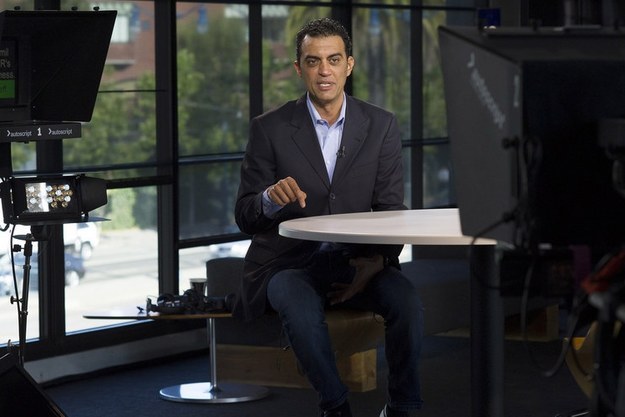Uber hit another reputation speedbump yesterday when one of its senior executives shared an unusual suggestion for generating better PR for the brand with a group of notables. At a celebrity-studded dinner in New York, SVP of Business Emil Michael floated the idea of hiring opposition researchers to dig up dirt on journalists who’ve been hard on the company in order to “give them a taste of their own medicine.” Michael singled out Pando Daily’s Sarah Lacy, who has accused Uber of encouraging a misogynistic culture.
Talk about a trainwreck (car wreck?). Apparently Michael thought he was speaking off the record, so the whole thing might have been another crazy cocktail-party story except for the fact that there were journalists present. One was Buzzfeed’s Ben Smith, who promptly posted a story about the bizarre conversation, because no one told him anything was off the record, and therefore it wasn’t. Twelve hours later, many are wondering if Michael will keep his job. Twitter dashboards lit up with the item, it was instantly picked up by major media outlets, and of course, Lacy responded to the story. The situation seems doubly ironic as it was intended as part of a charm offensive for Uber founder Travis Kalanick.
In nearly anyone’s book, Michael’s remarks were nutty. Probably the least remarkable part of it was his failure to confirm ground rules given the presence of media professionals. I don’t know if the fallout will actually hurt Uber’s business, but it’s bound to stall the PR engine. The lack of judgment and cultural arrogance that it takes to float a “black ops” campaign to a group of influencers is pretty staggering.
But for PR professionals and our clients, it also raises the questions what is off the record. It even made me think of the celebrated interview by the late Michael Hastings with General Stanley McChrystal. Possibly because alcohol was involved over the days Hastings spent “embedded” with McChrystal’s group, members of his entourage got cozy with Hastings and were way too free with the opinions they shared. They criticized President Obama, and after the story was published, McChrystal submitted his resignation.
It doesn’t have to be that way. PR professionals and journalists have worked together and shared mutually beneficial information for decades, and often part of a given exchange is off the record. It can and does work. But here’s what all of us need to remember.
Off the record means different things to different people. For most journalists, it means the information can be used, but not attributed to the one who divulged it. Yet to others, it can mean the information is not for publication and can be used only to search for corroborating information. It’s essential to spell things out.
Nearly all journalists will respond to clear ground rules. They may not agree to the rules proposed, but clarity will avoid a world of hurt. And I’ve never known a reporter to break his word once there’s a clear agreement not to use or attribute the information being shared. The point is, there are no rules until they are mutually agreed upon.
Anything off the record must be established in advance. Clients sometimes make the mistake of trying to do this retroactively. Don’t try to change the rules after the beans have been spilled. If the information is juicy, any reporter worth his/her stuff will run with the story.
Never assume a social conversation is private. Just because it’s a holiday party or a wedding rather than a formal interview, you cannot conclude that anything in a journalist conversation off the record. A close friend of mine used to be married to an ambitious investigative reporter who would routinely chat me up about my clients. My answers were bland and boring. It was probably an overreaction on my part, but it’s simply not worth the risk to share anything interesting, let alone controversial.
Work with a media relations professional. Yes, it’s self-serving and obvious, but if a PR person had been in the room, I don’t think the web would be buzzing about Uber’s latest gaffe. When in doubt about media relations ground rules, it pays to consult with top-tier people who do it for a living.


